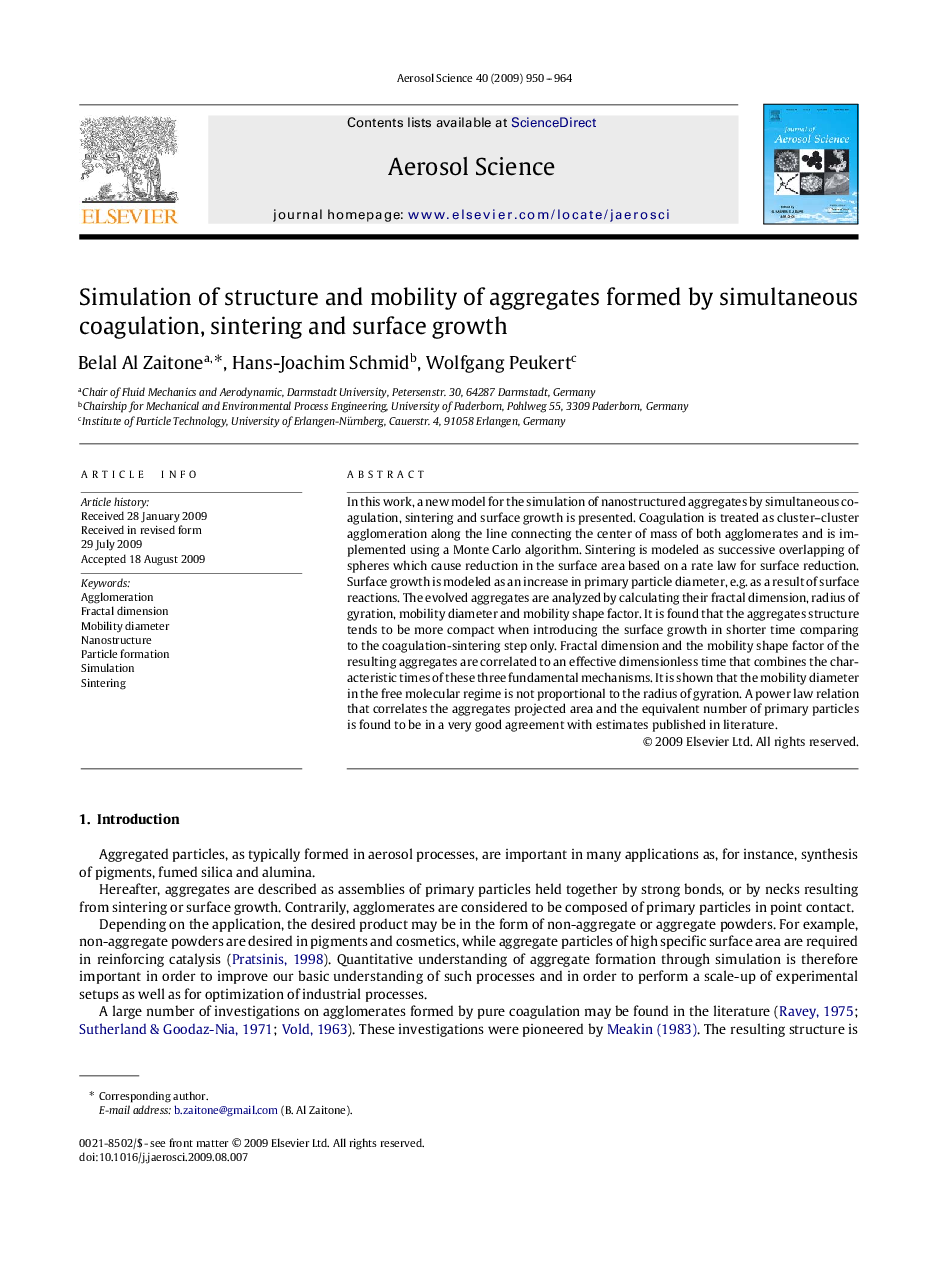| Article ID | Journal | Published Year | Pages | File Type |
|---|---|---|---|---|
| 4452936 | Journal of Aerosol Science | 2009 | 15 Pages |
In this work, a new model for the simulation of nanostructured aggregates by simultaneous coagulation, sintering and surface growth is presented. Coagulation is treated as cluster–cluster agglomeration along the line connecting the center of mass of both agglomerates and is implemented using a Monte Carlo algorithm. Sintering is modeled as successive overlapping of spheres which cause reduction in the surface area based on a rate law for surface reduction. Surface growth is modeled as an increase in primary particle diameter, e.g. as a result of surface reactions. The evolved aggregates are analyzed by calculating their fractal dimension, radius of gyration, mobility diameter and mobility shape factor. It is found that the aggregates structure tends to be more compact when introducing the surface growth in shorter time comparing to the coagulation-sintering step only. Fractal dimension and the mobility shape factor of the resulting aggregates are correlated to an effective dimensionless time that combines the characteristic times of these three fundamental mechanisms. It is shown that the mobility diameter in the free molecular regime is not proportional to the radius of gyration. A power law relation that correlates the aggregates projected area and the equivalent number of primary particles is found to be in a very good agreement with estimates published in literature.
